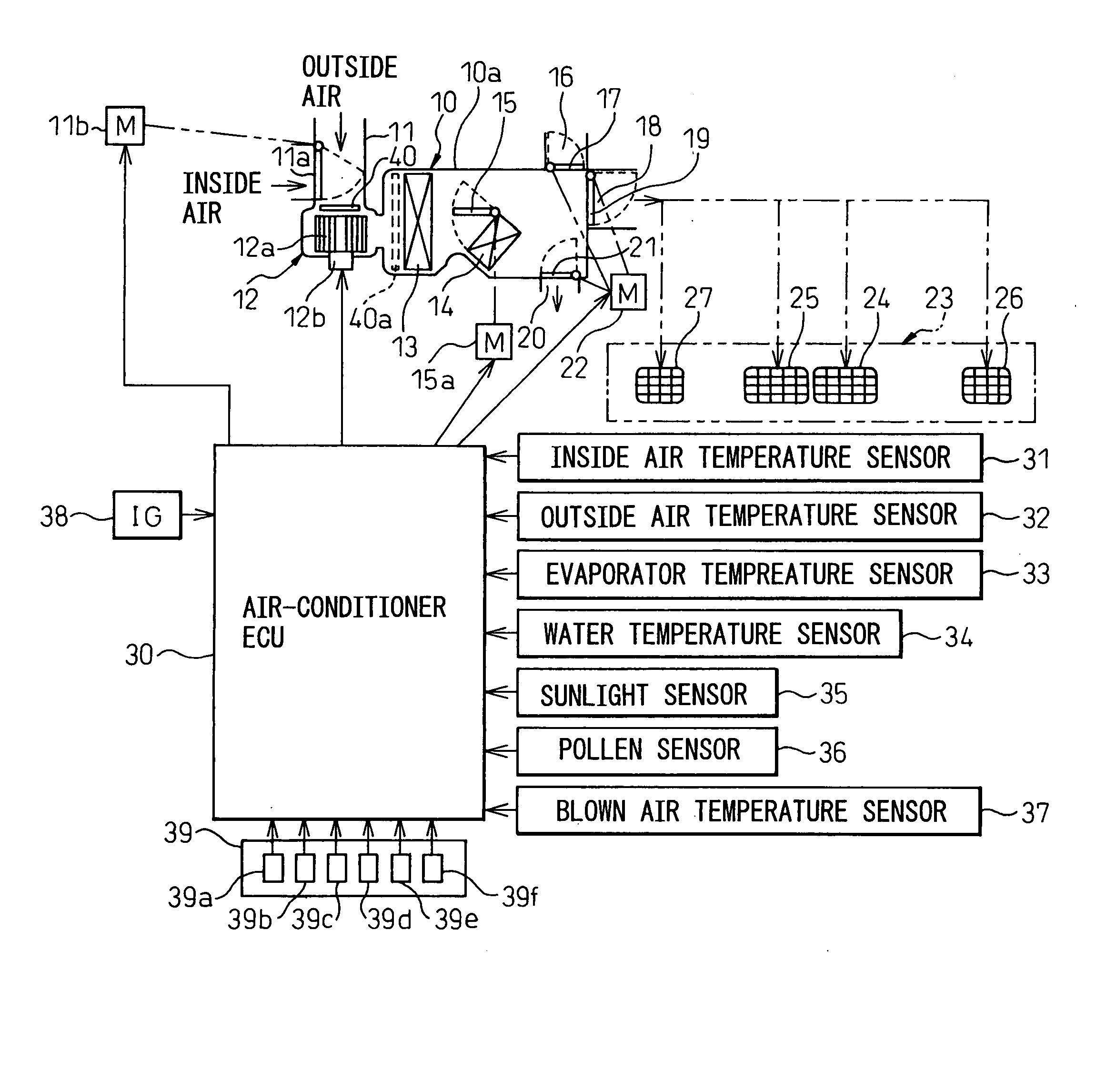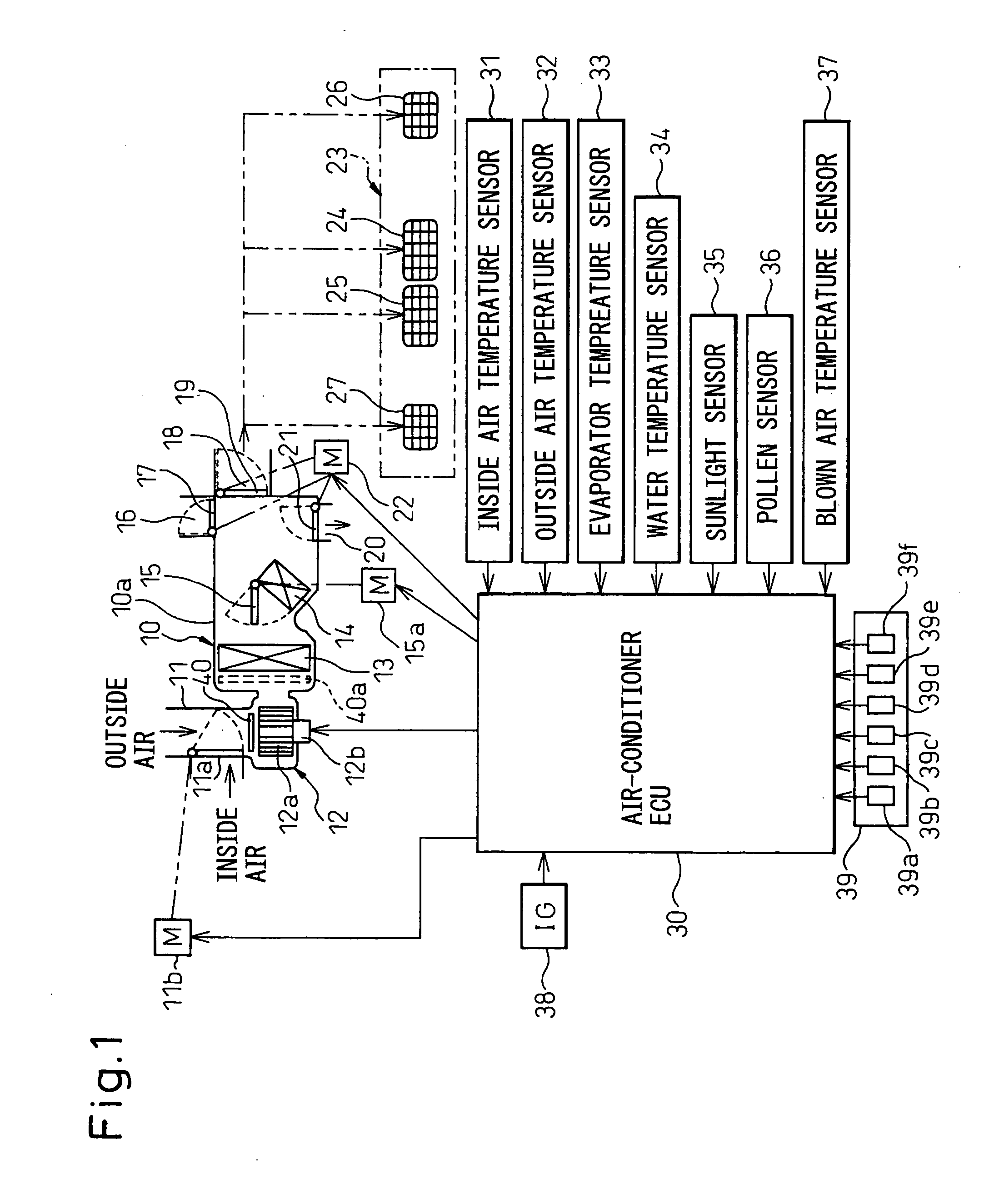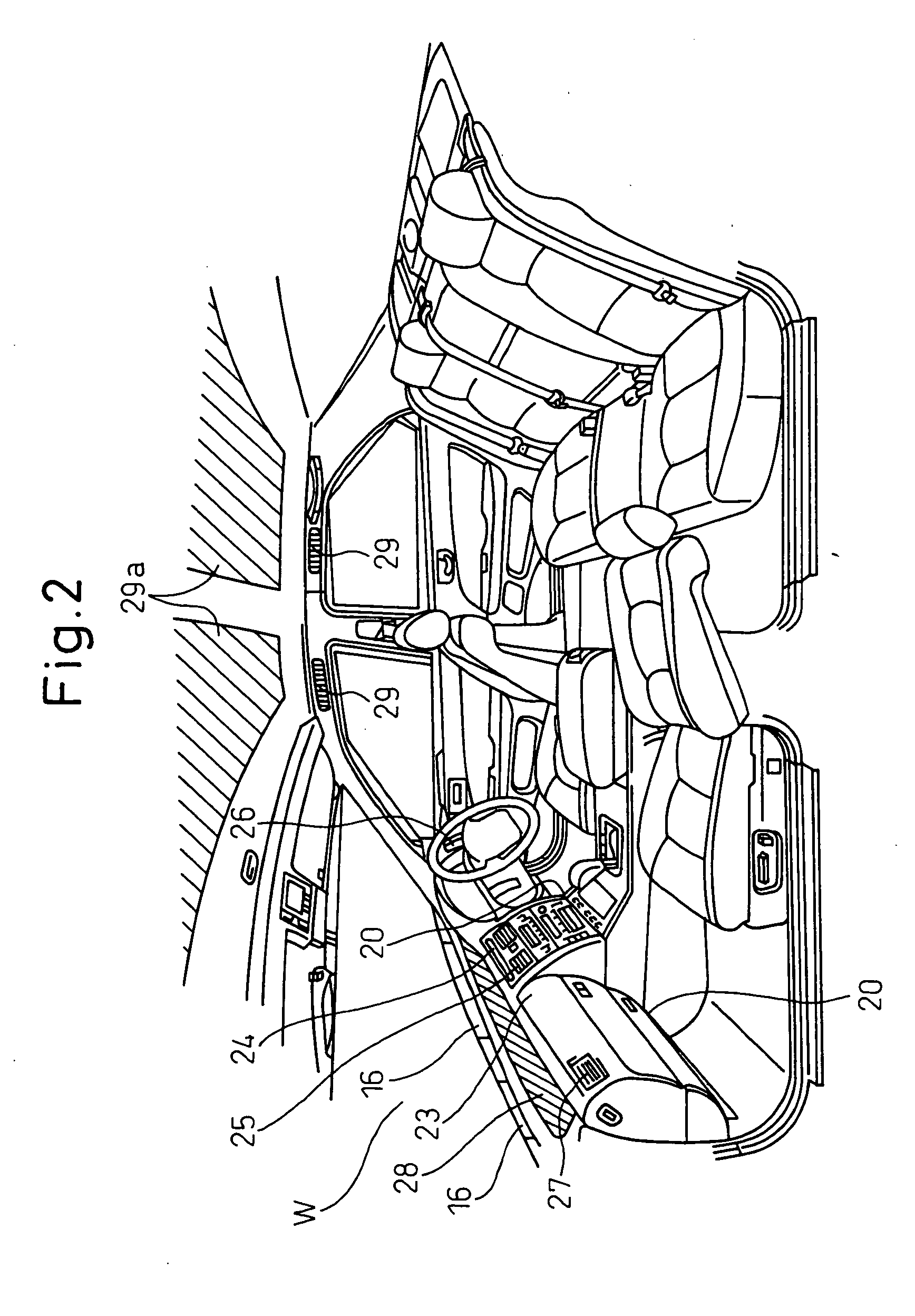Vehicular air-conditioner
- Summary
- Abstract
- Description
- Claims
- Application Information
AI Technical Summary
Benefits of technology
Problems solved by technology
Method used
Image
Examples
second embodiment
[0078] The second embodiment of the present invention does not make the blown air flow at the time of the start of the pollen mode the flat limit maximum air flow M1 like in the first embodiment, but adjusts it in accordance with the blown air temperature, in particular lowers the blown air flow when the blown air temperature is low. The point of difference from the first embodiment lies in the air-conditioner controller 30 only determines the instruction (blower air flow level) to be given to the motor 12b for driving the blower 12 using the detected temperature of the blown air temperature sensor 37. The rest of the configuration (FIG. 1 to FIG. 4) is similar to the first embodiment. Therefore, below, only the point of difference will be explained.
[0079]FIG. 8 is a view of the control characteristics of the pollen mode in the second embodiment. In the same way as the first embodiment, as the ignition switch 38 is turned on, the pollen mode is started, whereupon the intake mode is...
third embodiment
[0082] The third embodiment does not make the blown air flow in a predetermined period after the start of the pollen mode a constant limit maximum air flow M1, but performs intermittent control so as to switch the blown air flow between the limit maximum air flow M1 and a first air flow smaller than the limit maximum air flow M1. The point of difference from the first embodiment lies only in the intermittent fluctuation of the level of the blower air flow used as the instruction given to the motor 12b for driving the blower 12 serving as the blower control means by the air-conditioner controller 30. The rest of the configuration (FIG. 1 to FIG. 4) is similar to the first embodiment. Therefore, only the points of difference will be explained below.
[0083]FIG. 9 is a view of the control characteristics of the pollen mode in the third embodiment. That is, in the third embodiment, when the ignition switch 38 is turned on and the pollen mode is started, the blown air flow from the face v...
fourth embodiment
[0086] The fourth embodiment does not intermittently change the level of the blower air flow of the blower 12 like in the third embodiment, but switches the vents, that is, switches between the face vent and other vents such as the foot vent so as to substantively intermittently change the blown air flow from the face vent. Therefore, the point of difference from the first embodiment lies only in the air-conditioner controller 30 giving instructions to the actuator 22 for driving the doors 17, 19, and 21 serving as the vent control means in the pollen mode. The rest of the configuration (FIG. 1 to FIG. 4) is similar to the first embodiment. Therefore, only the points of difference will be explained below.
[0087]FIG. 10 is a view of the control characteristics of the pollen mode in the fourth embodiment. That is, in the fourth embodiment, when the ignition switch 38 is turned on and the pollen mode is started, the vent mode is switched between the face mode and the foot mode for exam...
PUM
| Property | Measurement | Unit |
|---|---|---|
| Temperature | aaaaa | aaaaa |
| Time | aaaaa | aaaaa |
| Flow rate | aaaaa | aaaaa |
Abstract
Description
Claims
Application Information
 Login to View More
Login to View More - R&D
- Intellectual Property
- Life Sciences
- Materials
- Tech Scout
- Unparalleled Data Quality
- Higher Quality Content
- 60% Fewer Hallucinations
Browse by: Latest US Patents, China's latest patents, Technical Efficacy Thesaurus, Application Domain, Technology Topic, Popular Technical Reports.
© 2025 PatSnap. All rights reserved.Legal|Privacy policy|Modern Slavery Act Transparency Statement|Sitemap|About US| Contact US: help@patsnap.com



